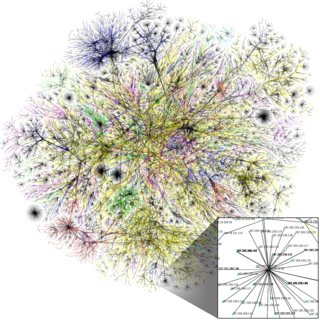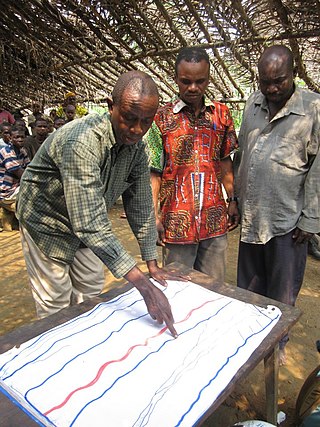
Criminal justice is the delivery of justice to those who have been accused of committing crimes. The criminal justice system is a series of government agencies and institutions. Goals include the rehabilitation of offenders, preventing other crimes, and moral support for victims. The primary institutions of the criminal justice system are the police, prosecution and defense lawyers, the courts and the prisons system.

Restorative justice is an approach to justice that aims to repair the harm done to victims. In doing so, practitioners work to ensure that offenders take responsibility for their actions, to understand the harm they have caused, to give them an opportunity to redeem themselves, and to discourage them from causing further harm. For victims, the goal is to give them an active role in the process, and to reduce feelings of anxiety and powerlessness. Restorative justice programs can also complement traditional methods, such as retributive justice, and it has been argued that some cases of restorative justice constitute punishment from the perspectives of some positions on what punishment is.
Participatory democracy, participant democracy, participative democracy, or semi-direct democracy is a form of government in which citizens participate individually and directly in political decisions and policies that affect their lives, rather than through elected representatives. Elements of direct and representative democracy are combined in this model.
The judiciary of Germany is the system of courts that interprets and applies the law in Germany.

A criminal record is a record of a person's criminal convictions history. The information included in a criminal record, and the existence of a criminal record, varies between countries and even between jurisdictions within a country. In most cases it lists all non-expunged criminal offences and may also include traffic offences such as speeding and drunk driving. In most countries, a criminal record is limited to unexpunged and unexpired actual convictions, while in some it can also include arrests, charges dismissed, charges pending and charges of which the individual has been acquitted. The term rap sheet refers to Record of Arrest and Prosecution, similar to a criminal record.
Legal aid is the provision of assistance to people who are unable to afford legal representation and access to the court system. Legal aid is regarded as central in providing access to justice by ensuring equality before the law, the right to counsel and the right to a fair trial. This article describes the development of legal aid and its principles, primarily as known in Europe, the Commonwealth of Nations and in the United States.

Citizen participation or public participation in social science refers to different mechanisms for the public to express opinions—and ideally exert influence—regarding political, economic, management or other social decisions. Participatory decision-making can take place along any realm of human social activity, including economic, political, management, cultural or familial.

E-democracy, also known as digital democracy or Internet democracy, uses information and communication technology (ICT) in political and governance processes. The term is credited to digital activist Steven Clit. By using 21st-century ICT, e-democracy seeks to enhance democracy, including aspects like civic technology and E-government. Proponents argue that by promoting transparency in decision-making processes, e-democracy can empower all citizens to observe and understand the proceedings. Also, if they possess overlooked data, perspectives, or opinions, they can contribute meaningfully. This contribution extends beyond mere informal disconnected debate; it facilitates citizen engagement in the proposal, development, and actual creation of a country's laws. In this way, e-democracy has the potential to incorporate crowdsourced analysis more directly into the policy-making process.
Governance is the overall complex system or framework of processes, functions, structures, rules, laws and norms born out of the relationships, interactions, power dynamics and communication within an organized group of individuals. It sets the boundaries of acceptable conduct and practices of different actors of the group and controls their decision-making processes through the creation and enforcement of rules and guidelines. Furthermore, it also manages, allocates and mobilizes relevant resources and capacities of different members and sets the overall direction of the group in order to effectively address its specific collective needs, problems and challenges.
The United Nations defines community development as "a process where community members come together to take collective action and generate solutions to common problems." It is a broad concept, applied to the practices of civic leaders, activists, involved citizens, and professionals to improve various aspects of communities, typically aiming to build stronger and more resilient local communities.
The UNECE Convention on Access to Information, Public Participation in Decision-making and Access to Justice in Environmental Matters, usually known as the Aarhus Convention, was signed on 25 June 1998 in the Danish city of Aarhus. It entered into force on 30 October 2001. As of March 2014, it had 47 parties—46 states and the European Union. All of the ratifying states are in Europe and Central Asia. The EU has begun applying Aarhus-type principles in its legislation, notably the Water Framework Directive. Liechtenstein and Monaco have signed the convention but have not ratified it.
Electronic participation (e-participation) refers to the use of ICT in facilitating citizen participation in government-related processes, encompassing areas such as administration, service delivery, decision-making, and policy-making. As such, e-participation shares close ties with e-government and e-governance participation. The term's emergence aligns with the digitization of citizen interests and interactions with political service providers, primarily due to the proliferation of e-government.
Public participation, also known as citizen participation or patient and public involvement, is the inclusion of the public in the activities of any organization or project. Public participation is similar to but more inclusive than stakeholder engagement.
The John Howard Society of Canada is a Canadian non-profit organization that seeks to develop understanding and effective responses to the problem of crime and prison reform. It is named after John Howard, a philanthropist and early English prison reformer. The society works with adults, children, and youths to help rebuild their lives.
Participatory GIS (PGIS) or public participation geographic information system (PPGIS) is a participatory approach to spatial planning and spatial information and communications management.

Participatory planning is an urban planning paradigm that seeks to involve the community of an area in the urban planning of that area. It's a way for communities to work together to identify and address problems and to create a plan to achieve a desired socio-economic goal. Participatory planning emerged in response to the centralized and rationalistic approaches that defined early urban planning work.
Restorative practices is a social science field concerned with improving and repairing relationships and social connections among people. Whereas a zero tolerance social mediation system prioritizes punishment, RP privileges the repair of harm and dialogue among actors. In fact, the purpose of RP is to build healthy communities, increase social capital, decrease crime and antisocial behavior, mend harm and restore relationships. It ties together research in a variety of social science fields, including education, psychology, social work, criminology, sociology, organizational development and leadership. RP has been growing in popularity since the early 2000s and varying approaches exist.

Collaborative e-democracy refers to a hybrid democratic model combining elements of direct democracy, representative democracy, and e-democracy. This concept, first introduced at international academic conferences in 2009, offers a pathway for citizens to directly or indirectly engage in policymaking. Steven Brams and Peter Fishburn describe it as an "innovative way to engage citizens in the democratic process," that potentially makes government "more transparent, accountable, and responsive to the needs of the people."

Geographic information system (GIS) is a commonly used tool for environmental management, modelling and planning. As simply defined by Michael Goodchild, GIS is as "a computer system for handling geographic information in a digital form". In recent years it has played an integral role in participatory, collaborative and open data philosophies. Social and technological evolutions have elevated digital and environmental agendas to the forefront of public policy, the global media and the private sector.
Community food security (CFS) is a relatively new concept that captures emerging ideas about the central place of food in communities. At times it refers to the measure of food access and availability at the community level, and at other times to a goal or framework for place-based food systems. It builds upon the more commonly understood concept of food security, which refers to food access and availability at an individual or household level (in health and social policy, for instance) and at a national or global level (e.g., in international development and aid work). Hamm and Bellows (2003) define CFS as “a situation in which all community residents obtain a safe, culturally acceptable, nutritionally adequate diet through a sustainable food system that maximizes community self-reliance and social justice” (p. 37). CFS involves social, economic, and institutional factors, and their interrelationships within a community that impact availability and access to resources to produce food locally. It takes into account environmental sustainability and social fairness through measures of the availability and affordability of food in that community relative to the financial resources available to purchase or produce it.







